The Legend of Henry VIII
Henry
VIII inherited from his father a country that was prosperous and stable after
decades of civil war. He made his own image a crucial factor in strengthening
still further the power of the monarchy.
During
the reign of King Henry VIII (1509-47), Englishmen had their first significant
contacts with the Renaissance, the new outlook in life and art that had first
appeared in Italy and was gradually spreading throughout Europe. Henry himself
welcomed Renaissance artists such as Holbein and the Italian sculptor Pietro
Torrigiano, and patronised the 'New Learning' of scholar-writers such as the
Dutchman Erasmus and England's own Sir Thomas More. In the early part of his
reign Henry enjoyed playing the part of the ideal Renaissance monarch handsome,
cultivated, extravagant, warlike, and above all the absolute monarch of his
realm. With age, corpulence and ulcers, much of the King's glamour disappeared,
but his mastery in the state had become greater than ever. Henry, the man of
many wives and many executions, was the first 'Tudor despot'.
Henry
was the second of the Tudor monarchs. His father, Henry VII (1457-1509),
founded the dynasty by defeating Richard III at the Battle of Bosworth in 1485.
This brought to an end the thirty-year Wars of the Roses, during which
aristocratic factions had made and unmade kings with alarming frequency. Henry
VII was not a colourful figure like his son and other descendants, but he
commanded respect and succeeded in restoring royal authority. Astute,
persistent, hardworking and a first-rate businessman, he made his nobles keep
the peace and greatly enriched the royal coffers.
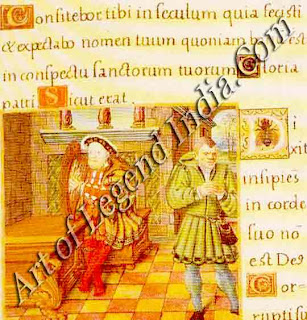 Henry
VIII was more erratic and lavish in his spending than his father, whose
carefully accumulated fortune he soon frittered away. But he maintained the
policy of strengthening the Crown, both practically and symbolically. Like his
father, he employed 'new men' from outside the nobility men whose loyalty could
be relied on, since they owed everything to him. At the same time, Henry made
the court a magnet for the nobility, encouraging them to compete for decorative
offices and signs of the king's favour, SO that they became psychologically
dependent on him and spent less time on the estates which constituted their
bases of power. Splendid ceremonies emphasized the special character of the
king; and a small but significant fact Henry ceased to be addressed as 'Your
Grace', like previous monarchs, and became the first to be called 'Your
Majesty'.
Henry
VIII was more erratic and lavish in his spending than his father, whose
carefully accumulated fortune he soon frittered away. But he maintained the
policy of strengthening the Crown, both practically and symbolically. Like his
father, he employed 'new men' from outside the nobility men whose loyalty could
be relied on, since they owed everything to him. At the same time, Henry made
the court a magnet for the nobility, encouraging them to compete for decorative
offices and signs of the king's favour, SO that they became psychologically
dependent on him and spent less time on the estates which constituted their
bases of power. Splendid ceremonies emphasized the special character of the
king; and a small but significant fact Henry ceased to be addressed as 'Your
Grace', like previous monarchs, and became the first to be called 'Your
Majesty'.
MOCKING THE POPE
Hampton
Court became Henry's favourite residence and he lavished money on it. His
additions included the majestic Great Hall and a court for the game of 'real
tennis' (that is, 'royal tennis'), a forerunner of the modern game. The palace
was the scene of two of his weddings (to Catherine Howard and Catherine Parr)
and his son Edward was born there in 1537.
The
minister who organized all this for Henry was Thomas Cromwell, another 'new
man', the son of a brewer and blacksmith. He developed the Tudor administration
into something that resembled a permanent and specialized civil service. Wales
was integrated into the English system in the mid-1530s, and later on Henry
promoted himself from 'Lord' to King of Ireland.
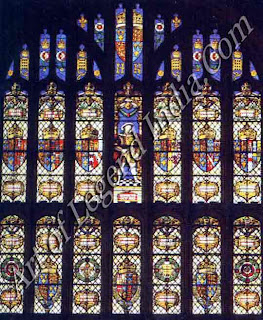
But the
king or his advisers knew that the drastic religious changes he had introduced
when he separated England from the Church of Rome were bound to confuse and
alienate many people. To counteract this, they launched a large-scale
propaganda campaign in the 1530s that was clearly intended to reach all
classes. Plays and pageants explained the changes, mocked the pope and played
on popular anti-clericalism; there was even a mock-battle on the Thames between
papal and royal barges which ended with the 'pope' and his 'cardinals' getting
a good ducking. Lawyers and moralists published pamphlets and books that
exploited the rising tide of nationalism, making loyalty to England and the
king the supreme value. And efforts were made to raise the status of kingship
even further.
A PASSION FOR BUILDING
Now
head of the Church, Henry was presented as, in effect, a semi-divine being.
When Holbein, normally so perceptive and realistic, was called on to paint the
King's portrait, he represented him as a cold and fearful icon rather than a
man; or, as a contemporary put it, 'not only a king to be obeyed, but an idol
to be worshipped'. In another of Holbein's works a miniature Henry appears as
Solomon under an inscription reading 'Blessed be the Lord thy God, which delighted
in thee to set thee on his throne, to be King for the Lord thy God.' And, for
more popular consumption, Henry was shown on the engraved titlepage of
Cranmer's Great Bible, enthroned like a divinity while he distributed 'the word
of God' and multitudes below shouted 'Vivat Rex'! (Long live the King!).
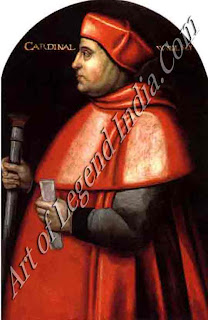 The
royal idol also advertised his greatness by building on a large and lavish
scale. Wolsey's suinptous houses at Hampton Court and York Place (later
Whitehall) were taken over and expanded into great royal palaces, and in Surrey
a palace with a fairytale skyline, Nonsuch, was built from scratch to rival the
famous French Renaissance château of Chambord. Nonsuch and York Place are now
destroyed, but Henry's portions of Hampton Court remain among the glories of
English architecture.
The
royal idol also advertised his greatness by building on a large and lavish
scale. Wolsey's suinptous houses at Hampton Court and York Place (later
Whitehall) were taken over and expanded into great royal palaces, and in Surrey
a palace with a fairytale skyline, Nonsuch, was built from scratch to rival the
famous French Renaissance château of Chambord. Nonsuch and York Place are now
destroyed, but Henry's portions of Hampton Court remain among the glories of
English architecture.
THE BREAK WITH ROME
During
Holbein's first visit to England (1526- 28), Henry was in his mid thirties but
still had something of the playboy about him. Tall and powerfully built, he
revelled in his athletic skills, and was also an accomplished musician.
Effective power was exercised by Cardinal Wolsey, a 'new man' (reputedly the
son of a butcher) who ran the government while the King jousted and hunted.
 By the
time Holbein returned in 1532, every-thing had changed. Wolsey was dead, and
the king involved himself far more closely with policy. Wolsey was doomed
mainly because he failed to obtain a divorce for the king. After many years of
marriage to Catherine of Aragon, Henry had only a single child, the Princess
Mary. This seemed to threaten the entire Tudor achievement, since everybody
knew that no woman could govern properly, and that chaos, civil war or foreign
occupation would inevitably result. (Of course Mary, and later Queen Elizabeth,
were to show that 'everybody' was quite wrong).
By the
time Holbein returned in 1532, every-thing had changed. Wolsey was dead, and
the king involved himself far more closely with policy. Wolsey was doomed
mainly because he failed to obtain a divorce for the king. After many years of
marriage to Catherine of Aragon, Henry had only a single child, the Princess
Mary. This seemed to threaten the entire Tudor achievement, since everybody
knew that no woman could govern properly, and that chaos, civil war or foreign
occupation would inevitably result. (Of course Mary, and later Queen Elizabeth,
were to show that 'everybody' was quite wrong).
Desperate
for a male heir, Henry convinced himself that his marriage was invalid (for
Catherine had been the wife of his dead brother), and put his case to Pope
Clement VII. The situation was complicated by politics as well as theology (the
Pope played for time, since he was a virtual prisoner of Catherine's nephew,
the Emperor Charles V), and by Henry's love for Anne Boleyn,. who insisted that
he prove it by marrying her. Eventually Henry took matters into his own hands,
breaking with the Pope, making himself Supreme Head of the English Church, and
marrying Anne.
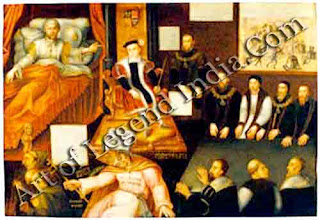
Ironically,
then, the weakness in the Tudors' political system the succession brought about
a series of events that tremendously enhanced the royal authority. In effect,
Henry became pope as well as king; and the Royal Supremacy which excluded papal
power from England also ended the independence of the English Church, whose
courts at last became answerable to the civil power. Furthermore, the vast
wealth of the medieval church restored the royal finances when Henry dissolved
(that is, closed down and took over) the thousand or so English monasteries,
confiscating their accumulated wealth and extensive lands.
A GODLIKE FIGURE
Henry's
reign was far from an unqualified success. He had six wives, executed two of
them, and had still not produced a healthy male heir. When invasion threatened,
possible claimants to the throne were removed by judicial murder. Ill-judged
wars bankrupted the Crown, and tampering with the currency seriously damaged
the economy. Yet Henry's propaganda campaign worked. We still see the King
through Holbein's eyes, as a splendid, godlike figure; and the strengthened
Tudor state bequeathed by Henry to his successors stood the test of revolutions
and § counter-revolutions over the three turbulent a reigns that followed.
Writer – Marshall
Cavendish
 Henry
VIII was more erratic and lavish in his spending than his father, whose
carefully accumulated fortune he soon frittered away. But he maintained the
policy of strengthening the Crown, both practically and symbolically. Like his
father, he employed 'new men' from outside the nobility men whose loyalty could
be relied on, since they owed everything to him. At the same time, Henry made
the court a magnet for the nobility, encouraging them to compete for decorative
offices and signs of the king's favour, SO that they became psychologically
dependent on him and spent less time on the estates which constituted their
bases of power. Splendid ceremonies emphasized the special character of the
king; and a small but significant fact Henry ceased to be addressed as 'Your
Grace', like previous monarchs, and became the first to be called 'Your
Majesty'.
Henry
VIII was more erratic and lavish in his spending than his father, whose
carefully accumulated fortune he soon frittered away. But he maintained the
policy of strengthening the Crown, both practically and symbolically. Like his
father, he employed 'new men' from outside the nobility men whose loyalty could
be relied on, since they owed everything to him. At the same time, Henry made
the court a magnet for the nobility, encouraging them to compete for decorative
offices and signs of the king's favour, SO that they became psychologically
dependent on him and spent less time on the estates which constituted their
bases of power. Splendid ceremonies emphasized the special character of the
king; and a small but significant fact Henry ceased to be addressed as 'Your
Grace', like previous monarchs, and became the first to be called 'Your
Majesty'.  The
royal idol also advertised his greatness by building on a large and lavish
scale. Wolsey's suinptous houses at Hampton Court and York Place (later
Whitehall) were taken over and expanded into great royal palaces, and in Surrey
a palace with a fairytale skyline, Nonsuch, was built from scratch to rival the
famous French Renaissance château of Chambord. Nonsuch and York Place are now
destroyed, but Henry's portions of Hampton Court remain among the glories of
English architecture.
The
royal idol also advertised his greatness by building on a large and lavish
scale. Wolsey's suinptous houses at Hampton Court and York Place (later
Whitehall) were taken over and expanded into great royal palaces, and in Surrey
a palace with a fairytale skyline, Nonsuch, was built from scratch to rival the
famous French Renaissance château of Chambord. Nonsuch and York Place are now
destroyed, but Henry's portions of Hampton Court remain among the glories of
English architecture.  By the
time Holbein returned in 1532, every-thing had changed. Wolsey was dead, and
the king involved himself far more closely with policy. Wolsey was doomed
mainly because he failed to obtain a divorce for the king. After many years of
marriage to Catherine of Aragon, Henry had only a single child, the Princess
Mary. This seemed to threaten the entire Tudor achievement, since everybody
knew that no woman could govern properly, and that chaos, civil war or foreign
occupation would inevitably result. (Of course Mary, and later Queen Elizabeth,
were to show that 'everybody' was quite wrong).
By the
time Holbein returned in 1532, every-thing had changed. Wolsey was dead, and
the king involved himself far more closely with policy. Wolsey was doomed
mainly because he failed to obtain a divorce for the king. After many years of
marriage to Catherine of Aragon, Henry had only a single child, the Princess
Mary. This seemed to threaten the entire Tudor achievement, since everybody
knew that no woman could govern properly, and that chaos, civil war or foreign
occupation would inevitably result. (Of course Mary, and later Queen Elizabeth,
were to show that 'everybody' was quite wrong). 
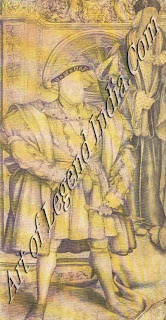
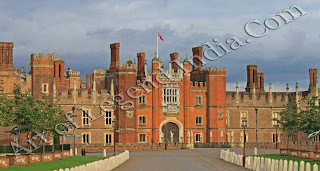












0 Response to "German Great Artist Hans Holbein - The Legend of Henry VIII "
Post a Comment